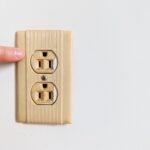Understanding circulation pumps
Circulation pumps play a crucial role in modern heating and cooling systems. These devices move water or other fluids through pipes and radiators, ensuring efficient heat distribution. In residential buildings, circulation pumps typically handle flow rates between 0.5 and 3 cubic meters per hour. Their power consumption ranges from 25 to 60 watts, depending on the size and model. Circulation and circulation pumps come in various types, including wet rotor and dry rotor pumps. Wet rotor pumps are more common in residential applications due to their compact size and quiet operation. [Circulation and circulation pumps] https://onninen.pl/en/products/Heating-systems/Circulation-and-circulation-pumps are essential components in maintaining comfortable indoor temperatures year-round.
Selecting the right heating pump group
Heating pump groups are integral to efficient heating systems. These units combine circulation pumps with valves and controls, simplifying installation and operation. A typical heating pump group includes a circulation pump, mixing valve, and temperature sensors. These components work together to regulate water flow and temperature in heating circuits. Modern heating pump groups often feature energy-efficient EC motors, which can reduce electricity consumption by up to 80% compared to older models. [Heating pump groups] https://onninen.pl/en/products/Heating-systems/Circulation-and-circulation-pumps/Heating-pump-groups are available in various configurations to suit different heating system designs. When selecting a heating pump group, consider factors such as flow rate, pressure drop, and compatibility with existing equipment.
Optimizing domestic hot water circulation
DHW circulation pumps ensure that hot water is readily available at taps throughout a building. These specialized pumps circulate hot water through dedicated pipes, reducing wait times and water waste. A typical DHW circulation pump operates at flow rates between 0.2 and 0.5 cubic meters per hour. Energy-efficient models consume as little as 5 to 8 watts during operation. [DHW circulation pumps] https://onninen.pl/en/products/Heating-systems/Circulation-and-circulation-pumps/DHW-circulation-pumps often feature built-in timers or temperature sensors to optimize operation. When installing a DHW circulation system, it’s important to insulate pipes properly to minimize heat loss. Proper sizing of the pump is crucial to ensure efficient operation and avoid unnecessary energy consumption.
Enhancing central heating and air conditioning efficiency
Circulation pumps for central heating and air conditioning systems are the heart of these comfort-providing installations. These pumps move water or refrigerant through heat exchangers, radiators, or cooling coils. In residential applications, flow rates typically range from 1 to 5 cubic meters per hour. Modern high-efficiency pumps can achieve energy savings of up to 70% compared to standard models. [Circulation pumps for central heating and air conditioning] https://onninen.pl/en/products/Heating-systems/Circulation-and-circulation-pumps/Circulation-pumps-for-central-heating-and-air-conditioning often feature variable speed drives, allowing them to adjust output based on demand. This capability ensures optimal comfort while minimizing energy consumption. When selecting a pump for central heating or air conditioning, consider factors such as system pressure, flow rate requirements, and compatibility with control systems.
Maintenance tips for long-lasting pump performance
Regular maintenance is key to ensuring the longevity and efficiency of circulation pumps. Here are some essential maintenance tasks:
- Inspect pumps visually for signs of leakage or unusual noise at least once a year
- Clean or replace pump filters every 6 to 12 months, depending on water quality
- Check and adjust system pressure annually to ensure optimal pump operation
- Lubricate bearings in dry rotor pumps according to manufacturer recommendations
- Test safety devices and controls at least once a year to ensure proper functioning
Properly maintained circulation pumps can last 10 to 15 years or more. However, if a pump is more than 10 years old and showing signs of inefficiency, consider replacing it with a newer, more energy-efficient model. Modern pumps with EC motors and advanced controls can significantly reduce energy consumption and operating costs. By following these maintenance tips and upgrading when necessary, you can ensure optimal performance and efficiency of your heating and cooling systems.





